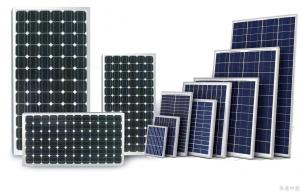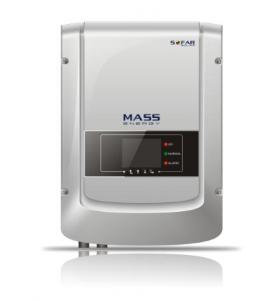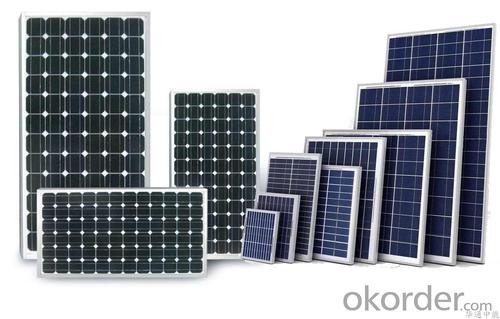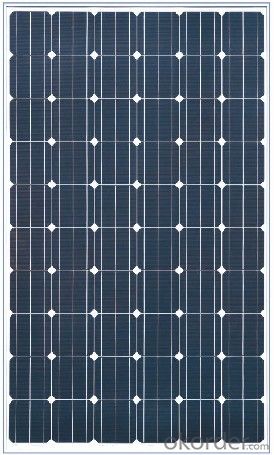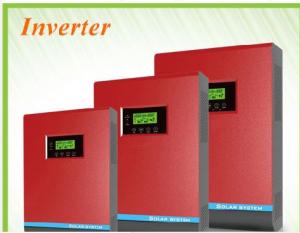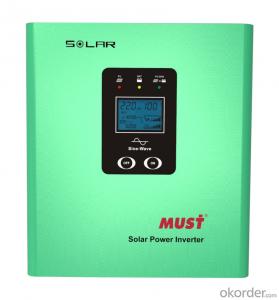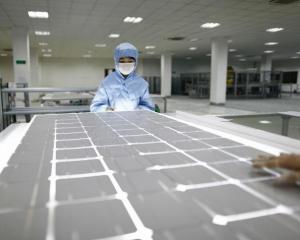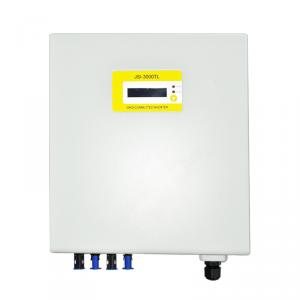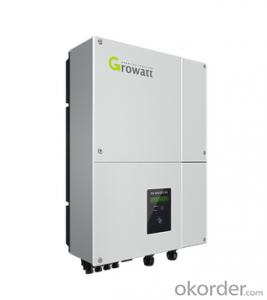36V 4600W Grid-Tied Solar PV Inverter 4600TLM
- Loading Port:
- Shekou
- Payment Terms:
- TT or LC
- Min Order Qty:
- 10 unit
- Supply Capability:
- 99999 unit/month
OKorder Service Pledge
OKorder Financial Service
You Might Also Like
4600W Grid-tied Solar PV Inverter 4600TLM
4600TLM inverter High-yield
•Max 97.6%efficiency
•Real timeprecise MPPT algorithm for max harvest
•Wide inputvoltage operation range from 100V to 550V
•Two MPPtrackers for flexible PV panel configuration
4600TLM inverter Low maintenance cost
•Rust-freealuminumcovers
•Flexiblemonitoring solution
•Multifunctionrelay can be configured to show various inverter information
4600TLM inverter Flexible and economicalsystem solution
•Free siteselection due to IP65
•Easy installationand maintenance due to “Plug & Play” connection
•Interfaceselection-Wi-Fi/RS485/DryRelay for more flexible configuration and system monitoring
•4” LCDdisplay
4600TLM inverter Intelligent grid management
•Reactivepoweradjustable
•Self powerreducerwhenover frequency
•Remoteactive/reactivepower limit control
4600TLM inverter datasheet
Technical Data | SOFAR 3000TLM | SOFAR 3680TLM | SOFAR 4000TLM | SOFAR 4600TLM | SOFAR 5000TLM |
Input (DC) | |||||
Max. Input Power | 3100W | 3800W | 4160W | 4800W | 5200W |
Max. DC power for single MPPT | 2000 (200V-500V) | 2400 (200V-500V) | 2600 (200V-500V) | 3000 (200V-500V) | |
Number of independent MPPT | 2 | ||||
Number of DC inputs | 1 for each MPPT | ||||
Max. Input Voltage | 600V | ||||
Start-up input voltage | 100V(+/-5V) | ||||
Rated input voltage | 360V | ||||
Operating input voltage range | 100V-550V | ||||
MPPT voltage range | 160V-500V | 165V-500V | 175V-500V | ||
Max. Input current per MPPT | 10A/10A | 12A/12A | 13A/13A | 15A/15A | |
Input short circuit current per MPPT | 12A | 14A | 16A | 18A | |
Output(AC) | |||||
Rated power(@230V,50Hz) | 3000VA | 3680VA | 4000VA | 4600VA | 5000VA |
Max. AC power | 3000VA | 3680VA | 4000VA | 4600VA | 5000VA |
Nominal AC voltage | L/N/PE, 220, 230, 240 | ||||
Nominal AC voltage range | 180V-270V | ||||
Grid frequency range | 44~55Hz / 54~66Hz | ||||
Active power adjustable range | 0~100% | ||||
Max. Output Current | 13A | 16A | 17.5A | 20A | 22A |
THDi | <3% | ||||
Power Factor | 1(Adjustable +/-0.8) | ||||
Performance | |||||
Max efficiency | 97.6% | ||||
Weighted eff.(EU/CEC) | 97.1%/97.3% | ||||
Self-consumption at night | <1W | ||||
Feed-in start power | 20W | ||||
MPPT efficiency | >99.5% | ||||
Protection | |||||
DC reverse polarity protection | Yes | ||||
DC switch | Optional | ||||
Protection class / overvoltage category | I/III | ||||
Input/output SPD(II) | Optional | ||||
Safety Protection | Anti-islanding, RCMU, Ground fault monitoring | ||||
Certification | CE, CGC, AS4777, AS3100, VDE 4105, C10-C11, G83/G59 (more available on request) | ||||
Communication | |||||
Power management unit | According to certification and request | ||||
Standard Communication Mode | Wifi+RS485 | ||||
Operation Data Storage | 25 years | ||||
General data | |||||
Ambient temperature range | -25℃ ~ +60℃ | ||||
Topology | Transformerless | ||||
Degree of protection | IP65 | ||||
Allowable relative humidity range | 0 ~ 95% no condensing | ||||
Max. Operating Altitude | 2000m | ||||
Noise | <25dB | ||||
Weight | 18kg | ||||
Cooling | Nature | ||||
Dimension | 344×478×165mm | ||||
Warranty | 5 years | ||||
Solar panels
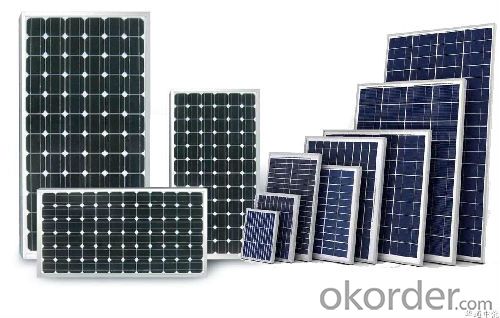
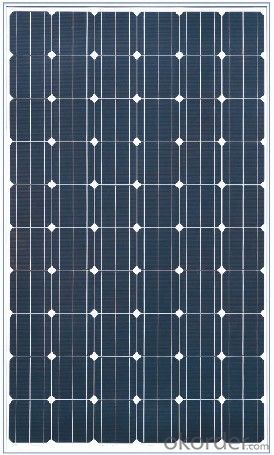
Certification
CNBM Solar strictly carries out the ISO 9001 quality control methodology and has implemented check points at every step of the production process to ensure our product performance durability and safety. The stringent quality control process has been confirmed by numerous independent agencies and LDK Solar modules earned IEC, TUV and UL certifications.
· IEC:IEC 61215, IEC 61730 (1&2), conformity to CE
· UL 1703 2002/03/15 Ed:3 Rev:2004/06/30
· ULC/ORD-C1703-01 Second Edition 2001/01/01
· UL and Canadian Standard for Safety Flat-Plate
· ISO 9001: 2008 Quality Management Systems
· CEC Listed: Modules are eligible for California Rebates
· PV Cycle: Voluntary module take back and recycling program
· MCS Certificate
FAQ
1. How do I decide which system is right for me ?
For protection from long outages, include a generator or solar panels in your Must solar system. Shorter outages can be handled by a battery-only system.
2. Where my system will be installed ?
Must solar systems are usually wall-mounted near a home's main electrical (circuit breaker) panel.
3. How do I install my system ?
A solar backup inverter is connected to a home electric system , we will supply detailed installation manual and videos for our customers .
- Q: How does a solar inverter handle power quality disturbances?
- A solar inverter handles power quality disturbances by continuously monitoring the electrical grid and adjusting its output accordingly. It employs various techniques such as voltage regulation, frequency control, and power factor correction to ensure that the power it feeds into the grid is of high quality and meets the required standards. Additionally, some advanced solar inverters also have built-in features like anti-islanding protection to prevent the injection of power into the grid during a disturbance, ensuring the safety of both the solar system and the grid.
- Q: What is the importance of surge protection in a solar inverter?
- Surge protection is of utmost importance in a solar inverter due to several reasons. Firstly, solar inverters are responsible for converting the direct current (DC) generated by solar panels into alternating current (AC) that can be used to power electrical devices. During this conversion process, there is a potential for power surges or voltage spikes to occur. These surges can damage the sensitive electronic components within the inverter, leading to malfunctions or complete failure. Secondly, solar inverters are often connected to the electrical grid, allowing excess electricity generated by the solar panels to be fed back into the grid. However, the grid can be prone to power fluctuations and surges caused by lightning strikes, utility switching, or other external factors. Without adequate surge protection, these power surges can travel back through the grid and damage the solar inverter. Furthermore, surge protection is essential in safeguarding the entire solar power system. In addition to the solar inverter, there are other components such as charge controllers, battery systems, and monitoring equipment that are interconnected. A surge in any part of the system can potentially damage or disrupt the entire system's operation. By installing surge protection devices, such as surge suppressors or surge arresters, in the solar inverter, the excess energy from power surges is diverted away from the sensitive electronic components. These devices are designed to absorb or redirect the surge, protecting the inverter and other connected equipment. In conclusion, surge protection is crucial in a solar inverter to prevent damage from power surges during the conversion process, protect against external power fluctuations from the grid, and safeguard the entire solar power system. Investing in proper surge protection ensures the longevity and reliable operation of the solar inverter, minimizing the risk of costly repairs or replacements.
- Q: What is the role of a power factor correction circuit in a solar inverter?
- The role of a power factor correction circuit in a solar inverter is to optimize the power factor of the electrical system. It ensures that the energy being generated by the solar panels is efficiently utilized by balancing the reactive power and reducing harmonic distortions. This helps in improving the overall system efficiency, reducing energy losses, and complying with grid regulations.
- Q: How does a solar inverter handle voltage and frequency variations caused by sudden load changes?
- A solar inverter is designed to handle voltage and frequency variations caused by sudden load changes in an efficient and reliable manner. When sudden load changes occur, the solar inverter employs various control mechanisms to regulate and stabilize the voltage and frequency output. Firstly, the inverter continuously monitors the voltage and frequency of the incoming solar power. If there are any variations due to sudden load changes, the inverter adjusts its internal control systems accordingly. It uses advanced power electronics and control algorithms to maintain the voltage and frequency within the desired range. To handle voltage variations caused by sudden load changes, the solar inverter employs a technique called voltage regulation. It automatically adjusts the output voltage by either boosting or reducing it as needed. This ensures that the inverter provides a stable and consistent voltage supply to the load, preventing any damage or malfunction. Similarly, to handle frequency variations caused by sudden load changes, the solar inverter employs a technique called frequency regulation. It adjusts the output frequency to match the grid frequency or the specified frequency requirements. By maintaining the desired frequency, the inverter ensures compatibility and synchronization with the grid or other connected devices. In addition to voltage and frequency regulation, solar inverters also have protective features to handle sudden load changes. They have built-in overload protection mechanisms that can detect excessive loads and prevent any damage to the inverter or the connected devices. These protective features can include overcurrent protection, short-circuit protection, and temperature monitoring. Overall, a solar inverter is designed to handle voltage and frequency variations caused by sudden load changes through its voltage and frequency regulation capabilities, as well as its protective features. These technologies ensure stable and reliable operation, allowing the inverter to efficiently adapt to changing load conditions while maintaining the integrity of the power supply.
- Q: What is maximum power point tracking (MPPT) in a solar inverter?
- Maximum Power Point Tracking (MPPT) in a solar inverter is a technique used to optimize the energy output of a solar panel system by continuously tracking and adjusting the operating point of the panels to ensure they are operating at their maximum power point. This is achieved by dynamically adjusting the voltage and current levels to match the changing environmental conditions and load requirements, allowing the solar panels to produce the maximum amount of power available at any given time.
- Q: How does a solar inverter handle frequency variations in the grid?
- A solar inverter handles frequency variations in the grid by continuously monitoring the frequency and adjusting its own output accordingly. If the grid frequency increases, the inverter reduces its output to prevent overloading. Conversely, if the frequency decreases, the inverter increases its output to maintain a stable supply. This dynamic response ensures that the solar inverter efficiently synchronizes with the grid and contributes to grid stability.
- Q: How does a solar inverter handle shading or partial obstruction of solar panels?
- A solar inverter is equipped with a technology called Maximum Power Point Tracking (MPPT) which allows it to handle shading or partial obstruction of solar panels. MPPT enables the inverter to constantly monitor the output of each individual solar panel and adjust the system's voltage and current accordingly. By doing so, the inverter ensures that the shaded or partially obstructed panels do not significantly affect the overall performance of the solar array. This way, it optimizes the energy production of the unshaded panels while minimizing the impact of shading on the system's efficiency.
- Q: How does a solar inverter handle different temperature conditions?
- A solar inverter is designed to handle different temperature conditions by employing various thermal management techniques. It typically has built-in cooling systems such as fans or heat sinks to dissipate excess heat. Additionally, advanced inverters may employ temperature sensors to monitor the internal temperature and adjust their operations accordingly. These temperature compensation features allow the inverter to maintain optimal performance and efficiency across a wide range of temperature conditions.
- Q: What is the maximum voltage input for a solar inverter?
- The maximum voltage input for a solar inverter typically depends on the specific model and manufacturer. However, in general, most solar inverters have a maximum voltage input ranging from 600V to 1000V.
- Q: How does a solar inverter handle voltage regulation?
- A solar inverter handles voltage regulation by continuously monitoring the incoming voltage from the solar panels and adjusting its output voltage accordingly. It ensures that the voltage produced by the solar panels is converted to the appropriate level for efficient use in the electrical system. This helps to maintain a stable and consistent voltage output, protecting the connected devices and optimizing energy conversion.
Send your message to us
36V 4600W Grid-Tied Solar PV Inverter 4600TLM
- Loading Port:
- Shekou
- Payment Terms:
- TT or LC
- Min Order Qty:
- 10 unit
- Supply Capability:
- 99999 unit/month
OKorder Service Pledge
OKorder Financial Service
Similar products
Hot products
Hot Searches
Related keywords
